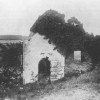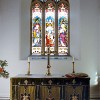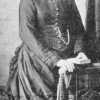Dorset can number many noted figures among its sons and daughters. Perhaps the most extraordinary character to emerge from the county in the 19th century was John Gould, though many would not have heard of him. Gould made a name for himself as an ornithologist of undeniable ability, and apparently he was also a gifted illustrator, who rose to become the toast of Victorian society.
John Gould was borne in Lyme Regis in 1804, the son of an estate gardener. Of his earliest years and education little or nothing is known, though his schooling appears to have been very elementary. His father’s own talents however, led him to secure a position as a gardener in a country estate and, ultimately, to a position of head gardener at the Royal Gardens at Windsor. But his son John’s real educator was the natural world. In the gardens, woods and fields of Dorset the boy’s future passion for ornithology was fostered.
This led young Gould onto an almost obsessive desire to preserve birds and animals for posterity. From another gardener who was skilled in the practise he learnt taxidermy, and discovered in himself an ability to preserve birds using only their dehydrated skins and feathers. With this newly acquired skill John Gould set up a taxidermy business in Windsor, where his unusual eye for the natural stance of birds and animals won for him the recognition of many clients and even the patronage of George IV.
When in 1827 the newly formed London Zoological Society held a competition to fill the position of its first director and curator, Gould entered and won the competition. Three years later, following the acquisition by the Society of a large collection of Himalayan exotic bird skins, the first curator was fired with the desire to bring the specimens to life in a lavishly illustrated book. The subsequent publication proved to be the turning point in Gould’s life. It won such great acclaim from the scientific world that it was said of John Gould that his expertise even surpassed that of the great French artist Audubon. Other books of exotic bird illustrations followed including ‘Birds of Europe’ and the seven-volume ‘Birds of Australia,’ which has an estimated value of over £150,000 at auction today.
But Gould’s reputation didn’t stop at being a master-ornithologist and illustrator. He was also a producer, director, publishing magnate, and entrepreneur – even a bit-player in the emergence of evolutionary theory. For it was John Gould to whom Charles Darwin entrusted for identification the bird-skins he had collected in the Galapagos Islands during the famous voyage of The Beagle. He was able to classify the specimens as eleven new species of finch – the very birds, which through the subtle changes or adaptations to different niches they displayed, Darwin would later use as a pivotal piece of evidence for evolution by natural selection. Darwin, on later reviewing his notes for ‘The Origin of Species’ realised that the birds had come from different islands in the archipelago, but it was Gould’s eye for detail which played an important part in the conclusion the naturalist came to concerning evolution.
Though his Victorian public were awe-struck by the apparent skill he showed in the reproductions in his bird books the underlying truth about John Gould was rather different. The buyers of his books were led to believe that he was a gifted ornithologist and illustrator, but Gould was no artist. He was actually perpetuating a caddish deception upon his readers when he had absolutely no need to mislead them.
The myth was perpetuated partly through a crafty captioning of the pictures in a way that suggested that he and his wife Eliza were the co-illustrators responsible for them. Certainly Eliza Gould was responsible for some of the lithographs in the books. But the truth is that the brilliant hand-coloured pictures were mainly the work of others, and the main illustrator was not mentioned at all. Some of the lithographs featured were even the work of Edward Lear! Gould is said to have worked these illustrators unreasonably hard, though he had no need to resort to the pretence of being a competent artist; his genuine reputation as an ornithologist would have stood by itself, as his knowledge of birds was second-to-none.
Furthermore, John Gould was far more a shrewd businessman than an accomplished draftsman and one with a very mean streak. His avian knowledge assisted Darwin in conceiving the theory of evolution, yet he would brazenly lie to dealers to save himself the expense of a new specimen, borrowing it instead for an artist to draw before returning it unvalued. Gould seems to have believed that his books would have greater appeal if they were considered the work of his genius alone. And almost certainly he intended that the general public and the scientific establishment would believe he was as much bird artist as bird expert.
But if Gould was miserly and deceitful in business he was a genteel and affectionate father in his family life. After Eliza’s early death he reveals in a surviving letter to another correspondent a heartfelt concern for his offspring’s welfare, writing that he “wanted to do the best for my dear little children.” But to Edward Lear, himself riddled with insecurity he was “a queer fellow who meant well, though a more singularly offensive-mannered man hardly can be.”
Gould’s life is now well told in a biography by travel writer Isabella Tree. In ‘The Bird Man: the Extraordinary Story of John Gould’ the author suggests that it was insecurity about his lack of education which lay at the root of Gould’s predisposition to deceive and plagiarise.
But bird fanciers have him to thank for one more legacy: he was responsible for introducing the budgerigar into Britain.



